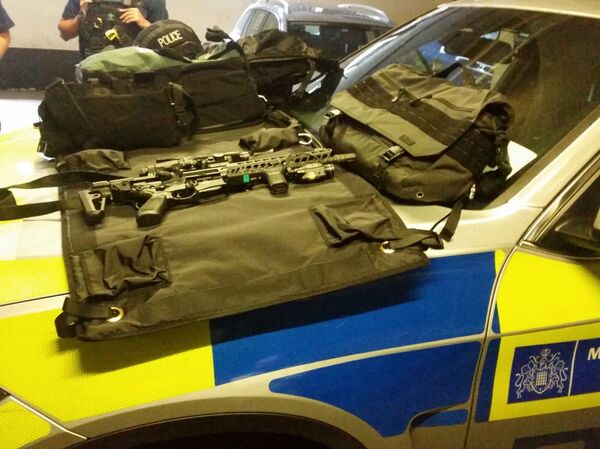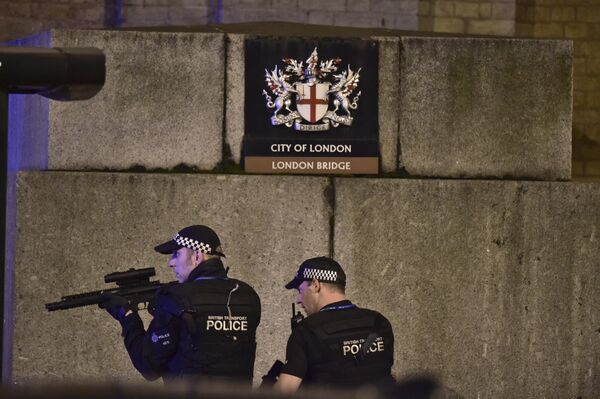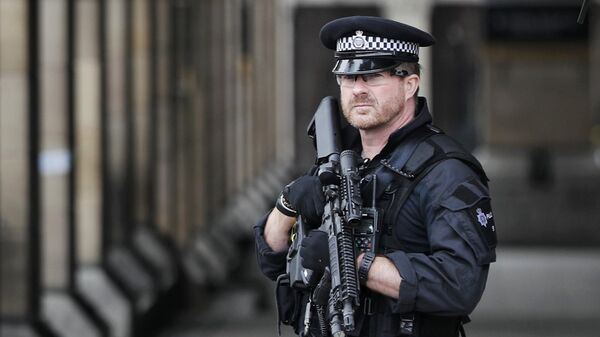"If you look at the rest of Europe there are a lot of armed officers, but they don't possess what we have," said Chief Supt Hendy.
Reporters trying out the "judgement range" (assessment of officers' aptitude) at a special briefing by the @metpoliceuk firearms unit today pic.twitter.com/9F3j67qiGb
— Sputnik UK (@SputnikNewsUK) 20 July 2017
"They may have 15,000 armed officers in Paris, but what they haven't got is highly trained armed response officers patrolling 24 hours a day," he said.
He said at any one time the Met had up to 30 Armed Response Vehicles (ARVs) patrolling the capital, each with crews of three officers.
"With triple crewed cars we can bring to bear three, six or nine officers on a situation very quickly and give them a fighting chance of winning the day," he said.
In June, several ARVs sped to Borough Market, on the south bank of the Thames after three Islamist terrorists rammed into people with a van and then ran amok with knives.
All three were shot dead by officers in Chief Supt Hendy's SCO19 command.
A few weeks earlier another attacker was gunned down in Westminster, when he mowed down people in a car and then stabbed an unarmed police officer, PC Keith Palmer, in the neck outside the Houses of Parliament.
On Thursday, (July 20) SCO19 showed off some of its weaponry in a special briefing for crime reporters.
The crew of each ARV — they tend to be BMW X5s — contains three firearms officers: a specialist high-speed driver, an operator and a navigator.
While the driver concentrates on getting to the scene as quickly as possible the navigator in the back seat directs them and the operator in the front seat keeps in touch with the control room and gathers information on the incident as they approach it.
Each officer is equipped with a Glock 17 9mm self-loading pistol, a Sig MCX carbine and a Tazer.

The weapons are kept in a ballistics safe on the back seat, and the team are also equipped with six stun grenades and a first aid kit which they can use to treat anyone who gets shot.
Andy, a firearms officer who cannot be named for tactical reasons, said eyewitnesses often mistake the stun grenades for shots but they were actually much louder than a gunshot.

He said in reality the officers will rarely fire more than one shot and he said proudly that the Met had not fired a single shot in the whole of 2016.
He hinted that police in the US were far more trigger-happy than their British counterparts.
"We shoot to stop, not shoot to kill," said Chief Supt Hendy, who is in the process of rolling out body cameras to all his officers.
"We are totally sold on the benefits of body-warn cameras because it will show exactly what happened but what is taking time is getting them on the eyeline," he said.
Chief Supt Hendy said experiments had been carried out with cameras mounted on guns or on the shoulder but they seemed to be most effective when they were carried at head height.
Violent crime rose in England and Wales by 18 percent this year, according to an Office of National Statistics report which came out on Thursday, July 20, and youth homicides in London are understood to have gone up by 80 per cent in the last year.
Explore crime statistics over time https://t.co/ObHkEhyJFA pic.twitter.com/wEiWB786oD
— ONS (@ONS) July 20, 2017
More young people are carrying knives, guns and now acid too, and SCO19 has its own hearts-and-minds initiative, Operation Makepeace, which goes out and tells young people of the dangers of carrying weapons.
"We tell them of our own personal experiences. I had a 14-year-old lad die on my lap, and I was covered in his blood. I was washing it off my fingernails for hours in the sink at home and a few hours later my children were brushing their teeth in the same sink," Andy told Sputnik.




